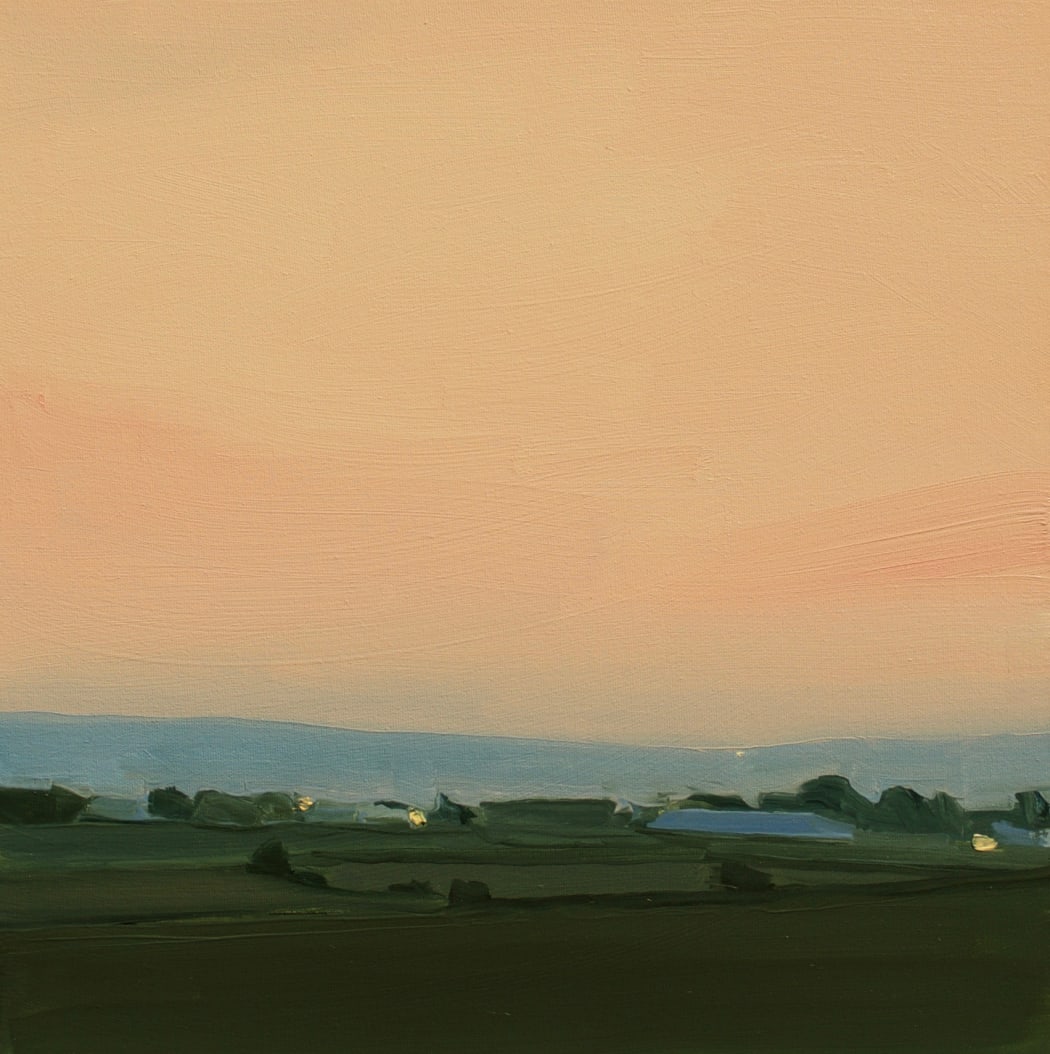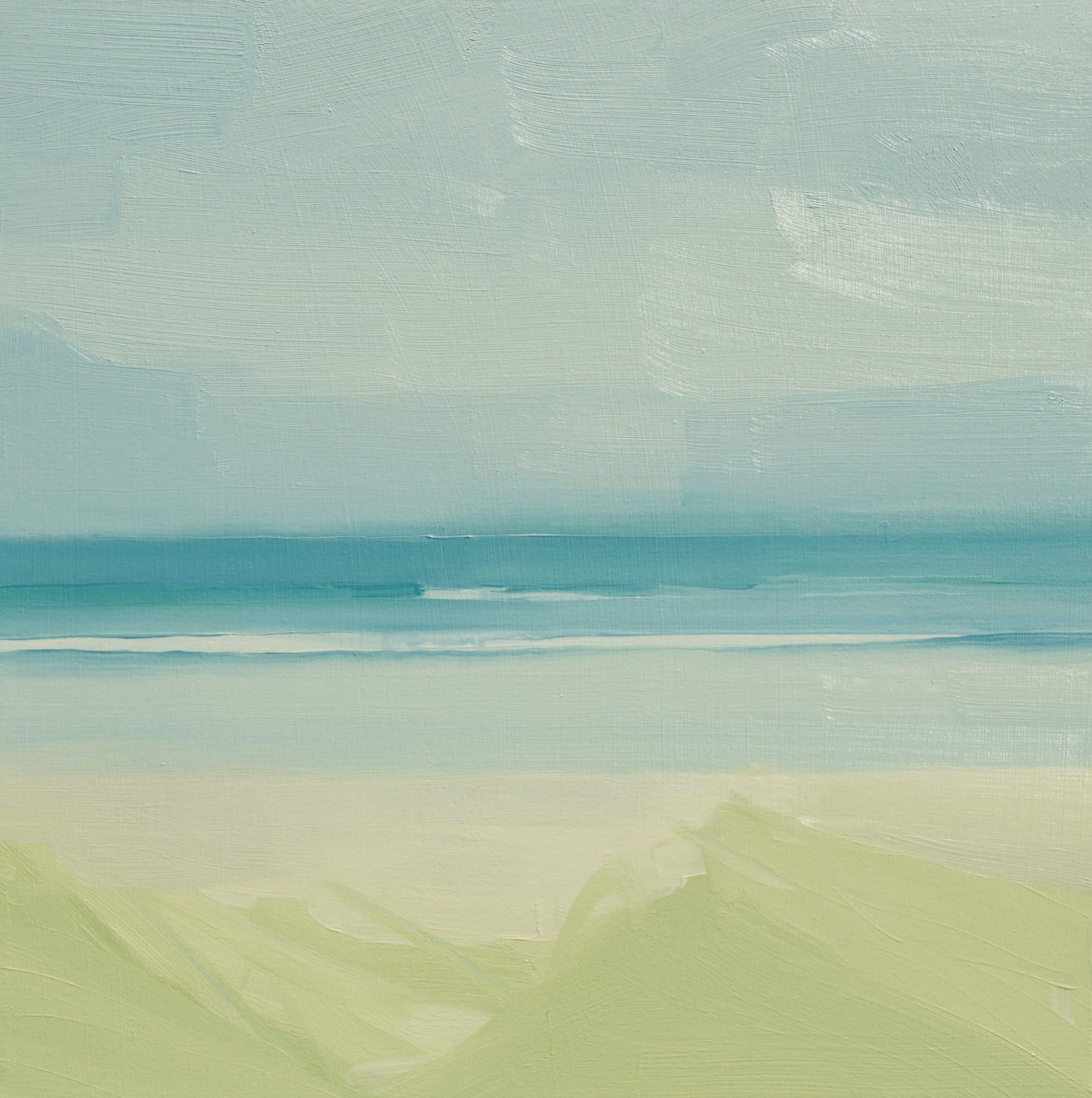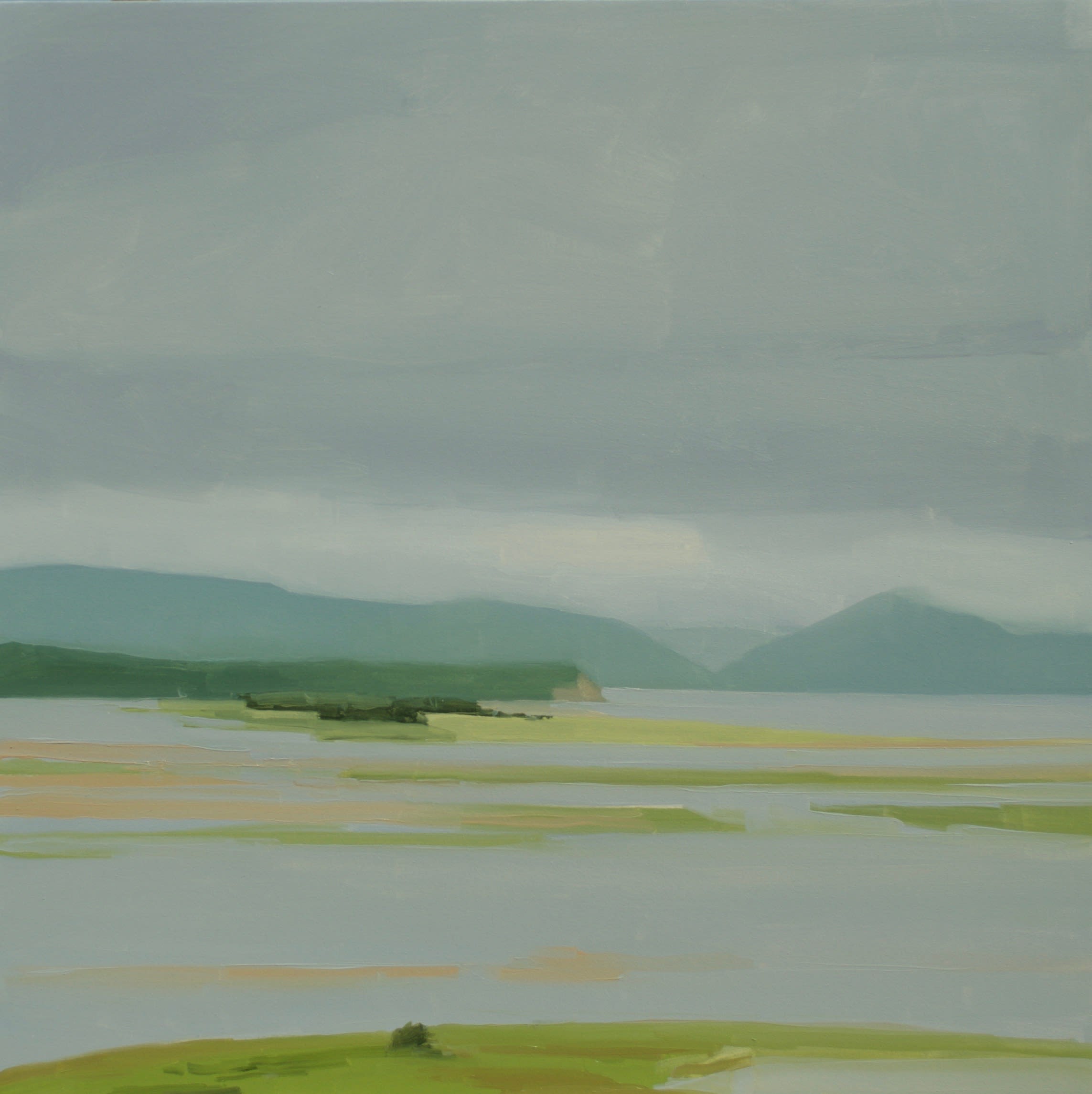
Every week, we'll be sitting down with one of our gallery artists to discuss their work, process, inspiration, and stories. This week we're speaking with Sara MacCulloch.

"Kingsport Sunset"
Taking in Sara MacCulloch’s landscapes can evoke an uncanny sense of familiarity. The scenes may resonate with the viewer, whether or not they have ever stepped foot in those surroundings. Her paintings capture the essence of a place and her emotional connection of experiencing it, rather than portraying minute details of representation. Typically completed in one studio session, her works have a sense of immediacy with their fresh brushstrokes. The overall impression of a MacCulloch landscape is one of muted serenity, but they have a lingering impact rooted in subtle shifts of color, painterly abstraction, and a lush organic palette. We talked with her from her studio in Nova Scotia as she prepares for her forthcoming exhibition, "Landscapes."

Photo courtesy of the artist
What are your earliest memories relating to art?
My earliest memories relating to art are from my parents’ house. My dad bought paintings. They were mostly realistic landscape paintings. At first I thought they were all of places that I knew, because they felt so familiar. But then I realized that they were just similar places, and I liked that. I felt I could understand them. They had the feel of the places that I knew.
Also, my Dad’s cousin, Ross MacCulloch, was a painter. We had some of his work. He did a lot of Nova Scotia landscapes and sometimes I can see his influence in my work. It sneaks in.
Did you always do landscapes? What was the evolution like towards finding your voice?
I always did landscapes. I grew up spending summers and weekends on a farm in the middle of nowhere. I was alone a lot, and the landscape kind of became a companion to me. I still feel that way about it. I was really only ever driven to capture landscape, because I loved it so much. Originally I thought I wanted to be a landscape photographer. I went to Concordia University with that goal in mind. They had a great photo department. But in my first year, I tried out painting and fell in love with it.
My first paintings were very painstakingly detailed. I liked contrasts. I was influenced by Matisse and the Fauves. I liked lots of color and dark, almost black, shadows. It was very vivid. I would work a painting over and over until it was right. The surface quality was dry and impasto in the end.
In 1999, I was invited to be in a show with a group of landscape painters. They asked me to do at least 10 paintings, all large, and I had only 5 weeks to accomplish it. Having such a deadline made me have to make decisions quickly, and stick to them. I had to trust my gut and not think too much, not be too critical. Because of that, the work ended up being very immediate and decisive. Because each one was practically done in one sitting, the work was all wet on wet, fluid. It was a real break for me, in the way I had been working. It felt so much more like drawing, and I loved finishing a work while I was in the same headspace. The work felt more congruous, airy, confident. Since then, I have almost always worked that way- with that immediacy.

"Waves"
What is your process like?
When I go into my studio, I look through all my source material, my sketches and photographs, and I feel out what I might like to paint. It’s about a scene fitting in with whatever I am going through that day. I often am looking for a certain mood to match mine. And usually in the work there is a place that I decide I would like to be, a kind of longing to be there, in that spot.
I will choose a subject and then just start to paint. The palette will be based on the subject, but also my mood. I tend to like things to be toned down, quiet, subtle. I like to make things that take time to unfold, where if a person were to spend time with the work, they might start to notice little details. Slight shifts in color, parts of the landscape that you don’t see right away: a wave breaking in the distance, a patch of light on a field, a cloud being hit by the sun.
I like to work with very wet paint. I sometimes will cover the entire surface with one color, and then start to paint. That way, every color has a bit of that ground in it, and somehow the resulting painting feels more together. I like having edges of paint come up next to one another, bleed into each other. It is tricky to not use too much medium and have drips. It’s best when the paint has just enough body to sit and almost blend with the color next to it. I have to work really fast in the summer, because the paint will start to dry. I’ll sometimes have to put the painting on the floor to dry, so that gravity doesn’t make the paint drag or drip.
What draws you to a scene in particular that makes you want to capture it in your work?
Usually the subjects I am drawn to sketch or photograph are places that somehow feel familiar, something that I would have seen when I was a kid while I was visiting family, or the landscapes we’d drive by. I’d make up stories about the fields or clearings on hills I could see. I’d notice the way the light hit things. I’d wish I could get out of the car. When I see those kinds of places now, they really resonate with me, especially in certain times of day like dusk or late afternoon, or if it’s in the fog. I want to make something that captures the feeling I have about those places. And I hope that the people who look at my work can feel that, but I also hope that they are reminded of their own places and maybe will look at them more closely, notice them more.

"South Harbour Beach"
What are your influences and inspirations?
I tend not to look at very much art, because I don’t want to be too influenced. But when I do, I love to look at David Hockney, Fairfield Porter, Gerhardt Richter, Milton Avery, Peter Doig, Richard Deibenkorn, Wayne Thiebaud, Alex Katz.
What do the pieces in the show represent about your current body of work?
The works in the show are places that I have painted before. The beaches are mostly from this one area of coastline on the South Shore of Nova Scotia, one of my favorite places in the world. The rest are of places around where I live, on the Minas Basin. I can really only paint the places I know and understand, that I am connected to somehow. It takes time to have that kind of relationship with a place. I lived in Ontario for 8 years, and only painted it after I left. I finally understood it, and longed for it when I was away from it.
Where is your work going from here?
I am continually trying to find new ways to approach the places that I love to paint. I want the work to get more and more simple, but still have enough there that the feeling is conveyed, and it really gets to the essence of the place. I could see myself getting more abstract, but it will take time. I develop slowly.

"Kingsburg Dusk"
See more of Sara MacCulloch's work here.
Her exhibition, "Landscapes," is on view September 8th through October 15th, 2016.
